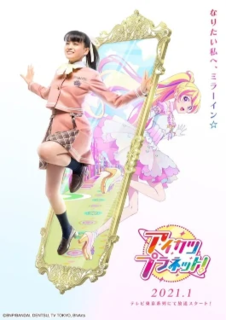 W
WAikatsu Planet! is an arcade collectible card game in Bandai's Data Carddass line of machines, which launched on December 2020. Unlike the Aikatsu!, Aikatsu Stars!, Aikatsu Friends!, and Aikatsu on Parade! series of arcade games, it revolves around using collectible swing cards for idol battle stage.
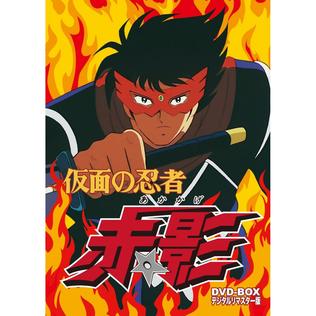 W
WAkakage is a Japanese superhero featured in several manga and anime, as well as live action movies and TV shows. Akakage first appeared in the 1967 TV series, Kamen no Ninja Akakage which was produced by Toei Company Ltd..
 W
WAmbassador Magma is the title and protagonist of a manga and tokusatsu TV series created by Osamu Tezuka. The TV series, produced by P Productions, Seven Arts Television and Krantz Films, was aired on Fuji TV from July 4, 1966, to June 26, 1967, lasting a total of 52 episodes. It is the first color tokusatsu TV series in Japan, beating Tsuburaya Productions' Ultraman to the air by six days. The show later aired in the US, dubbed in English, as The Space Giants. Digital Manga crowdfunded the manga, and it is currently available for digital purchase on their Emanga site.
 W
WAndroid Kikaider , also known as Kikaida, is a tokusatsu superhero TV series and the first to feature the superhero Kikaider. Created by Japanese manga artist Shotaro Ishinomori, the show was produced by Toei Company Ltd., and was broadcast in Japan on NET from July 8, 1972, to May 5, 1973, with a total of 43 episodes.
 W
WBarom-1 is a Japanese manga series written by Takao Saito. The original story was serialized for about a year from 1970 in Weekly Bokura Magazine . It was available online in English through JManga, but is now on Crunchyroll.
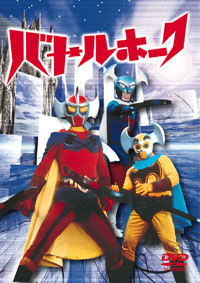 W
WBattle Hawk is a Japanese tokusatsu television series created by Go Nagai and Ken Ishikawa and produced by Toyo Agency, Dynamic Productions and KNOCK in 1976. It was originally aired on Mondays, from 19:30 to 20:00 in Tokyo Channel 12 between October 1976 to March 1977. A manga series was also created, featuring a different story and serialized in the magazine Boken Oh.
 W
WBIMA Satria Garuda is an Indonesian tokusatsu and comic series, the result of cooperation between MNC Media with Ishimori Productions, creator of the Japanese Kamen Rider Series. Starring Christian Loho, Rayhan Febrian, Stella Cornelia (JKT48), Adhitya Alkatiri, and Sutan Simatupang, BIMA Satria Garuda premiered on RCTI on 30 June 2013.
 W
WBittomo × Heroine Kirameki Powers! is a Japanese tokusatsu TV drama series that began airing on July 11, 2021. It is the fifth instalment in the Girls × Heroine Series produced by Takara Tomy and OLM, Inc..
 W
WChouseishin Gransazer , translated into English as Ultra Instint Star Gods and the GranSazers or Super Star Gods and the GranSazers or also known as only GranSazers, is a tokusatsu superhero TV series, produced by Toho Company Ltd., and Konami. The series aired on TV Tokyo from October 4, 2003, to September 25, 2004, with a total of 51 half-hour episodes. This series is the first of Toho's "Seishin " series.
 W
WCutie Honey: The Live is a Japanese tokusatsu production of the popular Cutie Honey manga and anime series, chiefly directed by Makoto Yokoyama and written primarily by Toshiki Inoue. It began airing on TV Tokyo on October 2, 2007. Gravure idol Mikie Hara portrays Honey Kisaragi, the title character. The show was released on Blu-ray by Discotek Media in 2021.
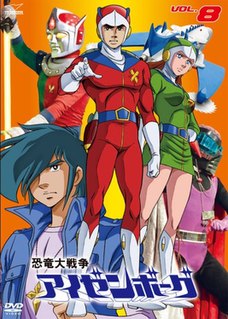 W
WDinosaur War Izenborg is a Japanese television program produced by Tsuburaya Productions that aired from 1977 to 1978 on TV Tokyo. It combined Tsuburaya's trademark suitmation tokusatsu techniques with anime. The show ran for 39 episodes.
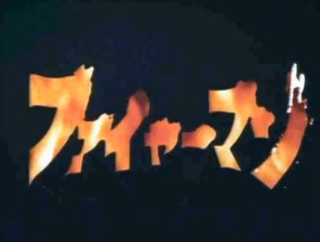 W
WFireman , known as Magma Man in some markets, is a Japanese tokusatsu television series about the titular superhero who fights kaiju and other villains. Produced by Tsuburaya Productions, the show was broadcast on Nippon Television from January 7 to July 31, 1973, with a total of 30 episodes. This was also one of several shows Tsuburaya did to celebrate the company's 10th anniversary.
 W
WFrance Five , originally titled Jūshi Sentai France Five and later known as Shin Kenjūshi France Five , is a French Mini-series directed by Alex Pilot and produced by Buki X-4 Productions in the 2000s (decade). It is an homage to Toei's popular Super Sentai series, which was extremely popular in France in the 1980s and the 1990s. As a nod to Super Sentai titles having certain motifs, France Five has each member themed after certain aspects of French culture.
 W
WFūma no Kojirō is a Japanese manga series written and illustrated by Masami Kurumada. It was published in Weekly Shōnen Jump from January 1982 to November 1983. It tells the story of sword legends and rivalry between ninja clans. The main character Kojiro is a young boy who is a member of the Fuma clan.
 W
WFuun Lion-Maru , known as Lion-Man outside Japan, was a tokusatsu television series that aired on the Fuji Television Network in Japan in 1973. Produced by P Productions — the studio behind its previous tokusatsu series including Magma Taishi, Spectreman and Kaiketsu Lion-Maru, it was the second series in the Lion-Maru trilogy, and featured a third Maru-like character named Black Jaguar. It also reunites only two actors: Tetsuya Ushio as Shishimaru and Yoshitaka Fukushima as Jonosuke, since Akiko Kujo and Norihiko Umechi were not featured in the sequel series. This Lion-Maru is deemed "the Rolling Tempest Ninja Warrior." This series was popularized in Brazil as Lion Man in 1989, the only other country besides Japan to show the 25 episodes of this series.
 W
WGanbare!! Robocon is a Japanese tokusatsu comedy family robot television series created by Shotaro Ishinomori and produced by Toei. It ran from October 4, 1974, to March 25, 1977, on NET TV. Moero!! Robocon ran from January 31, 1999 to January 23, 2000. This series joined Kyuukyuu Sentai GoGo-V.
 W
WGaro , sometimes referred to as Golden Knight Garo , is a Japanese tokusatsu television series broadcast on TV Tokyo from October 7, 2005, to March 31, 2006, lasting 25 episodes. Since 2007, the show has also been aired in other countries such as Italy, Malaysia, and Spain. The show's HD remastered version was broadcast on TV Tokyo starting July 8, 2016. The television series is the first installment of the "GARO" metaseries, which is composed of several installments, including a live action television series, films, TV & film specials, and anime series. The television series has been licensed for a North American release by Kraken Releasing.
 W
WGaro: Makai no Hana is a 2014 Japanese tokusatsu television drama. It is the fourth television series in the Garo metaseries, this time focusing on the character of Raiga Saezima, the son of the original protagonist Kouga, who takes on the mantle of the Golden Knight Garo. The series began broadcast on April 4, 2014, on TV Tokyo and its sister stations in the TX Network.
 W
WGaro: Makai Senki is a Japanese tokusatsu television series serving as a sequel to Garo, airing on TV Tokyo between October 6, 2011 and March 22, 2012. The catchphrase for the series is "The knight's oath, shines in gold" .
 W
WGaro: Yami o Terasu Mono is a Japanese tokusatsu television series. that premiered on April 5, 2013, on TV Tokyo. Written and directed by Makoto Yokoyama, Yami o Terasu Mono is the third television series in the Garo metaseries, but is set in a different continuity than previous and following entries. The catchphrase for the series, referred to as the Vol City Chapter , is "Get back your gold." .
 W
WGiant Phantom Monster Agon is a 1964 black-and-white Japanese Kaiju miniseries. Produced by Nippon Television, the miniseries aired on Fuji TV from January 2, 1968, to January 8, 1968. Internationally, the film is known as Agon: Atomic Dragon. The series was re-released in a condensed feature-length film in the mid-1990s by Toho.
 W
WGiant Robo , also known as Johnny Sokko and His Flying Robot in the United States, is a manga and tokusatsu series created by Mitsuteru Yokoyama. It is similar to Yokoyama's Tetsujin 28-go, but Giant Robo has more elements of fantasy. The original 26-episode tokusatsu TV series, produced by Toei Company, aired on NET from October 11, 1967 to April 1, 1968.
 W
WGodzilla Island is a television show spinoff of the Godzilla franchise. It premiered on October 6, 1997, and ran for a total of 256 three-minute episodes, finishing on September 30, 1998.
 W
WDenkou Choujin Gridman , known as Gridman the Hyper Agent in some English-speaking territories, is a 1993–1994 Japanese tokusatsu "Giant Hero" series created by Tsuburaya Productions and would be Tsuburaya's last non-Ultra superhero production before Bio Planet WoO. It was the inspiration and source material for DiC Entertainment's Superhuman Samurai Syber-Squad.
 W
WHeisei Ultraseven is a collective of Japanese direct-to-video instalments, serving as a standalone sequel to the 1967-68 tokusatsu series Ultraseven. The series took place in an alternate universe featuring Ultraseven diverging from Ultraman and other succeeding Ultra Series starting from Return of Ultraman.
 W
WHell Girl , also known as Jigoku Shōjo: Girl from Hell, is a Japanese anime series conceptualized by Hiroshi Watanabe and produced by SKY Perfect Well Think, Tokyo MX, Wakasa Seikatsu, Fujishoji, Aniplex and Studio Deen. It is directed by Watanabe and Takahiro Omori, with Kenichi Kanemaki handling series composition, Mariko Oka designing the characters and Yasuharu Takanashi, Hiromi Mizutani and Kenji Fujisawa composing the music. The series focuses on the existence of a supernatural system that allows people to take revenge by having other people sent to Hell via the services of the mysterious title character and her assistants who implement this system. Revenge, injustice, hatred, and the nature of human emotions are common themes throughout the series.
 W
WIdol × Warrior Miracle Tunes! is a Japanese television series that aired from April 2, 2017, to March 25, 2018, on TV Tokyo. The show is the first installment of the Girls × Heroine Series conceived by Takara Tomy and OLM, Inc. with the assistance of Shogakukan and EXPG Studio, aimed towards a female demographic between ages 2 to 6. The general director of the series is Takashi Miike, supported by a staff full of newcomer screenwriters and directors. The series stars Asaka Uchida, Suzuka Adachi, Yuzuha Oda, Rina Usukura, and Mio Nishiyama. The plot is centered on Japanese idol girl group Miracle², elementary and middle school girls who transform into Idol Warriors to retrieve the Sound Jewels, artifacts from the Music Kingdom, to stop the Demon King from taking over the world.
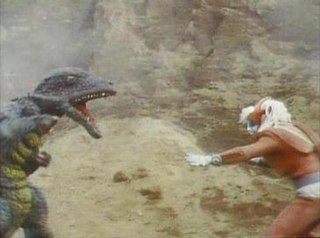 W
WGo! Godman is a Japanese tokusatsu Kyodai Hero kaiju television series by Toho. It ran from October 5, 1972, to April 10, 1973. It was pulled from reruns on September 28, 1973, and it was replaced by Ike! Greenman.
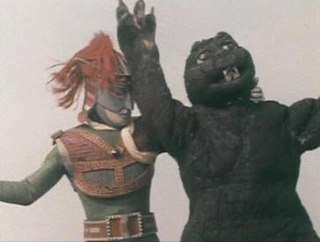 W
WGo! Greenman is a tokusatsu television series Kyodai Hero kaiju produced by Toho in 1973. It ran from November 12, 1973, to September 27, 1974. It emerged as a follow-up series to Ike! Godman, but the two share no continuity. Compared to Ike! Godman, Go! Greenman has an established plot.
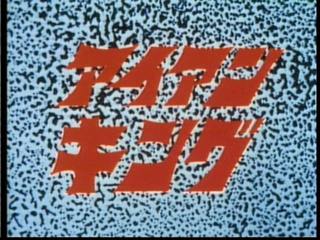 W
WIron King is a tokusatsu superhero TV series about a giant cyborg. The series was produced by Nippon Gendai and Senkosha, and aired on Tokyo Broadcasting System from October 8, 1972, to April 8, 1973, with a total of 26 episodes.
 W
WKaiju Booska is a famous children's sitcom, and the first to feature the friendly monster Booska. Produced by Tsuburaya Productions, the show aired on Nippon TV from November 9, 1966 to September 27, 1967, with a total of 47 episodes. There was a Booska revival in Japan from 1998 to 2000, when a new season of Booska was released called "Booska! Booska!".
 W
WExtraordinary Hero Lion-Maru , was a Japanese tokusatsu television series in the Lion-Maru franchise that aired in 1972-1973, produced by P Productions and set during Japan's Sengoku period.
 W
WKaiketsu Zubat , is a tokusatsu superhero series that aired in 1977. Created by Shotaro Ishinomori, this 32-episode series, harkens back to tokusatsu superhero shows of the 1950s, but with a late-1970s twist. The series was first released on DVD in 2008.
 W
WLion-Maru G is a Japanese tokusatsu series that aired from October 1, 2006 to November 24, 2006 in Japan, lasting 13 episodes. It is the third part in the Lion-Maru trilogy, following Kaiketsu Lion-Maru and Fuun Lion-Maru. The "G" is short for 'Ghetto'.
 W
WMagical × Heroine Magimajo Pures is a Japanese television drama series that began airing on April 1, 2018 until March 24, 2019. It is the second installment of the Girls × Heroine Series produced by Takara Tomy and OLM, Inc. with the assistance of Shogakukan and EXPG Studio, following the success of Idol × Warrior Miracle Tunes! The show is aimed at a female demographic between the ages of 2 to 6. The series stars Yuki Miyoshi, Momoka Sumitani, Misaki Tsuruya, Youka Ogawa, and Kurea Masuda. The plot is centered on the Magimajo Pures, a group of middle school girls who transform into Magical Heroines to protect people's dreams from the Nuisance World.
 W
WMirrorman is a Japanese tokusatsu science fiction television series produced by Tsuburaya Productions, the series aired on Fuji TV from December 5, 1971 to November 26, 1972, with a total of 51 episodes. This was Tsuburaya Productions' first non-Ultra superhero. Like Ultraseven, Mirrorman was more of a dark and brooding science fiction drama than most other shows of its ilk, but by Episode 26, after major changes were forced upon the series by the network, it became a typical action-oriented superhero adventure of its era.
 W
WNational Kid is a Japanese TV series produced by Toei Company in 1960. Broadcast on NET, it was sponsored by Panasonic, then known as Matsushita Electric, to promote the National brand. Although not very famous in Japan, the series has obtained cult status in Brazil, where it was very popular.
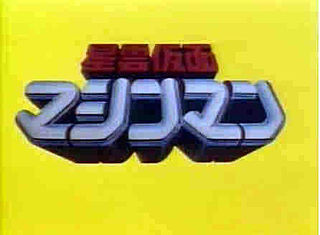 W
WNebula Mask Machineman is a Japanese tokusatsu television series created by Shotaro Ishinomori and produced by Toei Company. It aired from January 13 until September 28, 1984. It revolves around the adventures of Nick (Nikku), a college student from the Ivy planet and his arrival on Earth to study the earthlings' behavior. Upon arrival, he is called in for the activities of the evil organization called "Tentacle", whose don, Professor K, wishes to eliminate all children in the world.
 W
WPlanet Prince is a 1958 Japanese tokusatsu superhero television series created by Masaru Igami and produced by Senkosha, the series aired on NTV from November 4, 1958 to October 6, 1959, with a total of 49 episodes. It was created to capitalize on the success of Shintoho's Super Giant (Starman) movie series. In fact, the title hero bore a strong resemblance to Super Giant. The pair of Planet Prince theatrical featurettes, adapted from the Senkosha TV series, were produced by Toei Studios and filmed in black and white ToeiScope format.
 W
WPolice × Heroine Lovepatrina! is a Japanese tokusatsu TV drama series that began airing on July 26, 2020, until June 27, 2021. It is the fourth installment in the Girls × Heroine Series produced by Takara Tomy and OLM, Inc..
 W
WPretty Guardian Sailor Moon is a Japanese tokusatsu television series based on the Sailor Moon manga created by Naoko Takeuchi. It was produced by Toei Company.
 W
WPro-Wres no Hoshi Aztecaser also known as Pro-Wrestling Star Aztekaiser is a Japanese pro-wrestling-themed tokusatsu/anime superhero television series produced by Tsuburaya Productions, and created by Go Nagai and Ken Ishikawa. Nagai and Ishikawa created three manga series, simply named Aztecaser , published in different magazines by Shogakukan. None of them are related between them or the TV show. They were compiled in a single tankōbon in 1978 (Futabasha), 1986 and 2001 (Futabasha).
 W
WSatria Garuda BIMA-X is an Indonesian tokusatsu series which is the result of cooperation between MNC Media initiated by Reino Barack with Ishimori Productions, maker of the Kamen Rider series. This series marks the Second Season of the titular hero that started as BIMA Satria Garuda in 2013, while also becoming the second part of the Satria Series that was created by Reino Barack and Ishimori Pro. Following its success, in addition to toys merchandise line, Satria Garuda BIMA-X has also been adapted into a video game developed by Namco Bandai Games, announced through the official instagram account Reino Barack.
 W
WSecret × Heroine Phantomirage! is a Japanese television drama series that aired from April 7, 2019, to June 28, 2020. It is the third installment of the Girls × Heroine Series produced by Takara Tomy and OLM, Inc. with the assistance of Shogakukan and EXPG Studio. The series stars Minami Hishida, Kira Yamaguchi, Toa Harada, and Ran Ishii. Additional cast members include Mandy Sekiguchi, Tsubasa Honda, and Takumi Saitoh, with narration provided by Toshiyuki Toyonaga. The plot is centered on Phantomirage, a group of middle school gentleman thieves who fight the Gyakugyaku Police and steal the treasures in people's hearts. This was also the last installment of the Girls × Heroine series to be produced in the Heisei period and the first to be produced in the Reiwa period.
 W
WSocialite Belle Panchanne: The Wife Is a Superheroine! is a Japanese tokusatsu comedy series that began airing April 3, 2007 on TV Tokyo. The story follows a nearly 30-year-old housewife contracted to become a bishōjo superheroine by a kami. The series is a parody of an earlier tokusatsu series titled La Belle Fille Masquée Poitrine and features that show's writer returning. Cospa is featured in several episodes.
 W
WSpace Sheriff Gavan , also known as Space Cop Gabin, is a Japanese Tokusatsu series produced by Toei Company that aired on TV Asahi from March 5, 1982 to February 25, 1983. The series launched the Metal Hero franchise and was the first installment in the Space Sheriff series.
 W
WSpider-Man , also referred to as Japanese Spider-Man, is a Japanese live-action tokusatsu television series produced by Toei Company, loosely based on Marvel Comics' Spider-Man character via a contract that was negotiated by producer Gene Pelc. The series lasted 41 episodes, which aired on Tokyo Channel 12 from May 17, 1978, to March 14, 1979. A theatrical episode was shown in the Toei Manga Matsuri film festival on July 22, 1978. From March 5 to December 24, 2009, Marvel uploaded English subtitled versions of all 41 episodes on their website.
 W
WSquadron Sport Ranger is a Thai live-action superhero television series similar to the Japanese Super Sentai and the American Power Rangers franchises. It premiered on August 6, 2006 and aired on Thai Channel 3. Much like each Super Sentai and Power Rangers series has an overall theme, Sport Ranger's theme is sports, which each of the Sport Rangers has a specialty in.
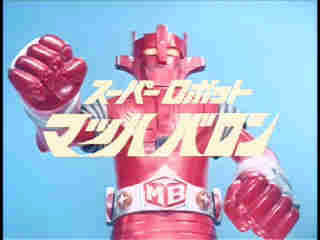 W
WSuper Robot Mach Baron is a Japanese tokusatsu series that aired from October 7, 1974, to March 31, 1975. It was a sequel to Super Robot Red Baron.
 W
WSuper Robot Red Baron is a Japanese tokusatsu series that aired from July 4, 1973, to March 27, 1974. It was produced by Nippon Gendai Kikaku and Senkosha Productions. Its story was later retold in the anime Red Baron and it had a sequel titled Super Robot Mach Baron.
 W
WThunder Mask is a 1972 tokusatsu series produced by Nippon Television. An adaptation by Osamu Tezuka was serialized in Shogakukan's Weekly Shōnen Sunday from 1972 to 1973.
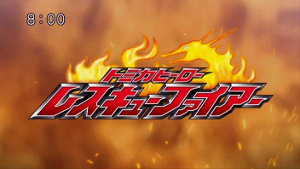 W
WTomica Hero: Rescue Fire is a Japanese tokusatsu television series based on Takara Tomy's Tomica toy car line. A sequel to Tomica Hero: Rescue Force, Rescue Fire tells of another branch of the United Fire-Defense Agency that helps save people from Super-Fire created by demons seeking to make people suffer. This series marks the beginning as well as an end of a program franchise dubbed the Tomica Hero Series. The Tomica Hero story was concluded in the special stage production Nissan Haul Special Live Stage FINAL that featured the return of Obuchi, a new R4, and the return of the original R4.
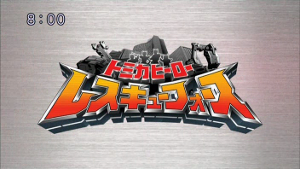 W
WTomica Hero: Rescue Force is a Japanese tokusatsu television series that began airing April 5, 2008, on TV Aichi. It is the first Tomica Hero series based on Takara Tomy's Tomica toy car line. The characters use Tomica's Super Tools and Super Vehicles to help save people from Super-Disasters and battle the evil causing them. It is the second tokusatsu series that Takara Tomy has been involved in following Madan Senki Ryukendo. It is directed by Masato Tsujino , and written by Shinichi Inotsume and Hiroyuki Kawasaki , the same team behind Ryukendo. A film for Tomica Hero: Rescue Force was released in December 2008.
 W
WX Bomber is a marionette tokusatsu TV series created by manga artist Go Nagai, and produced by Cosmo Productions and Jin Productions. The show aired on Fuji TV from October 4, 1980 to March 28, 1981, with a total of 26 episodes, and was billed in Japan as being filmed in "Sūpāmariorama" (スーパーマリオラマ), a puppeteering process similar to Gerry Anderson's Supermarionation works.
 W
WZero: Black Blood is a Japanese film duology and television miniseries, a spin-off from the Garo television series. The film is split into two portions. The White Chapter , which comprises the first three episodes of the miniseries, had a limited theatrical release on March 8, 2014, and the Black Chapter , the last three episodes, had a limited theatrical release on March 22, 2014. The film was also shown on the Japanese cable television channel Family Gekijo as a six-episode miniseries from March 5 through March 7, 2014, with two episodes shown each night.
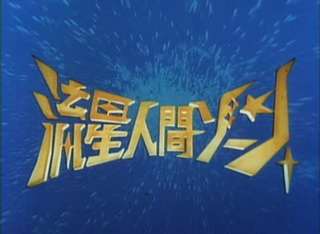 W
WZone Fighter, known in Japan as Meteor Human Zone , is a tokusatsu science fiction superhero television series. Produced by Toho Company Ltd., the show aired on Nippon Television from April 2 to September 24, 1973, with a total of 26 episodes. This was Toho's answer to not only the popular Ultra Series, but the Henshin Hero phenomenon started by shows like Kamen Rider and Android Kikaider. The previous year, Toho had just made their first successful superhero show, Rainbowman. The series was also notable for its guest appearances by Toho's own Godzilla, as well as two other Toho monsters, King Ghidorah and Gigan. Supplementary materials published by Toho have confirmed Zone Fighter to be part of the Showa-era Godzilla series, taking place in between Godzilla vs. Megalon and Godzilla vs. Mechagodzilla.